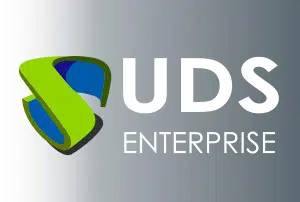Two essential tasks must be carried out to configure this new UDS Enterprise capability, and they must be executed in this order:
-
All devices that will be available for remote access must be registered in one or several Static Multiple IP service within the service provider Static IP Machines Provider and have a token assigned. The steps to follow to apply these settings are described in this post.
-
All devices must have installed the new Unmanaged UDS Actor with the same token indicated in the previous step.
The UDS Unmanaged Actor is downloaded from the UDS server itself, which is accessed through a web browser with a user with administration permissions. This component will be the one that will notify the system when a user logs in and out on a computer, to know when to release it.
There are two versions of the Unmanaged Actor, one for Windows devices (Desktop and Server) and another for Linux, specifically for Debian-based distributions (Ubuntu, xUbuntu, Kali Linux, Raspbian…). It should be noted that these actors, in the same way as the other ones that come in UDS Enterprise 3.0, are digitally signed and include advanced security features.
Once the UDS Actor is downloaded on the computer available for remote access, you will proceed to its installation. The configuration wizard will require the following information:
-
SSL Validation. Type of security to be used for communication with the UDS server.
-
UDS Server. Name or IP address of the UDS server.
-
Service Token. Here you need to introduce the same code indicated in the Static Multiple IP section.
-
Log Level. The type of records that will appear in the UDS Actor log files.
Once these easy steps have been completed, and the appropriate connection protocol has been enabled on the device, it will be ready to be used remotely. Its sessions will be controlled automatically by UDS Enterprise.
This new functionality from UDS Enterprise 3.0 has been widely applauded by the community of partners, customers and users, since it allows to optimize the use of computing resources. Many organizations are using it today to improve the efficiency of their remote working and distance learning systems, while offering greater accessibility to its users.
For any technical or commercial query, you can contact our team through [email protected]







0 Comments